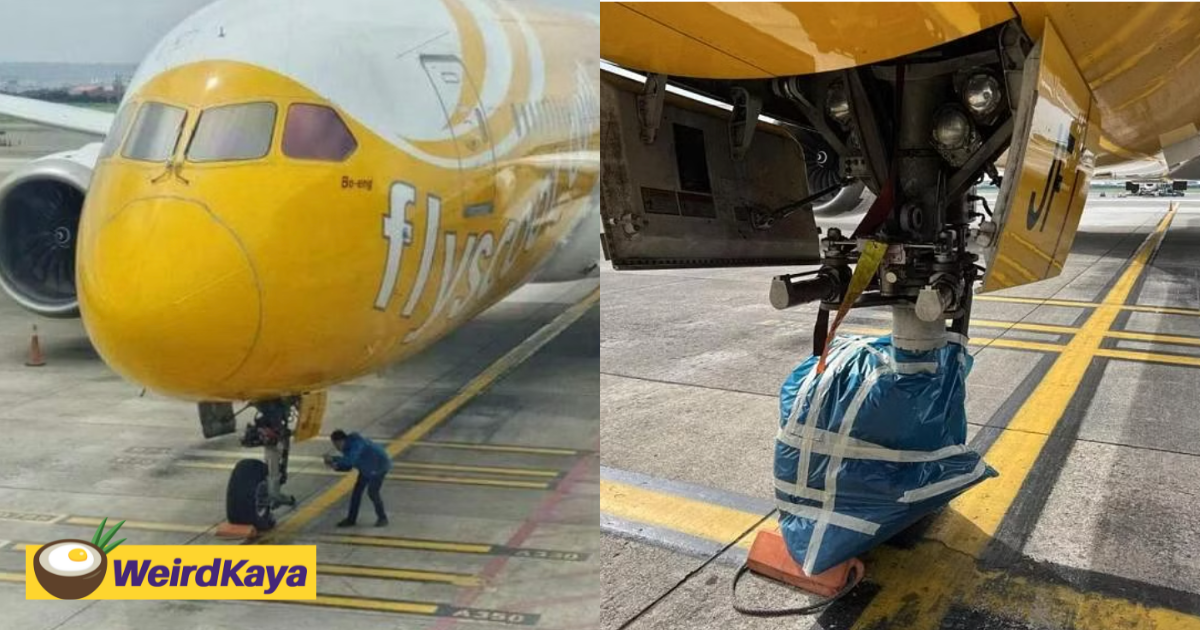After landing at Taiwan’s Taoyuan Airport earlier today (19 June), Scoot Airline’s flight TR897 from South Korea, via Taiwan, to Singapore, discovered that the nose wheel was missing the left tire, causing an abnormal tire pressure upon landing.

According to Taiwan’s United Daily News, the TR897 flight arrived at Taoyuan Airport from Incheon Airport in South Korea at 12:02 a.m.
Upon inspection by the ground crew after landing, it was discovered that the entire left tire of the nose wheel was missing, with only the right tire remaining.

Scoot Airline’s Response
Confirming the incident in response to inquiries from Zaobao, a spokesperson for Scoot Airline stated that the TR897 flight, which was scheduled to depart from Taipei to Singapore at 1:30 a.m. on the 19th, had to be cancelled due to technical failure.
As an alternative, Scoot Airline has arranged the TR897D flight to transport the affected passengers to Singapore, with a departure time of 8:45 p.m. on the same day.
Scoot Airline advised passengers residing in Taiwan to return home, and accommodations or ticket refunds have been arranged for other passengers.

Additionally, Scoot Airline will assist passengers originally scheduled for a transfer in Singapore.
Expressing sincere apologies for the inconvenience and disruptions caused by the incident, the spokesperson emphasized that the safety of passengers and crew members is Scoot Airline’s utmost priority.
The airline has assured passengers affected that they will provide necessary assistance to the affected passengers.
Questioned By Experienced Pilot
The incident has raised questions about the maintenance procedures and oversight of ground crew personnel.
Speaking to SET News, former civil aviation pilot, Yu Haowei, pointed out that such tire detachment is primarily attributed to maintenance issues rather than the pilots.
Yu emphasized that the proper tightening of screws and safety measures during the loading and unloading process should prevent such incidents.
Investigations will be conducted by relevant authorities, including the Civil Aviation Administration, to determine the cause of the technical issue and any lapses in maintenance procedures.
Read more:



